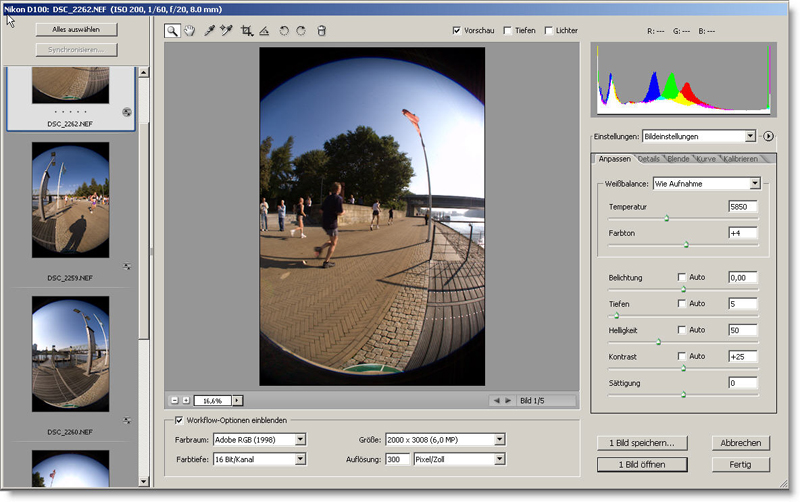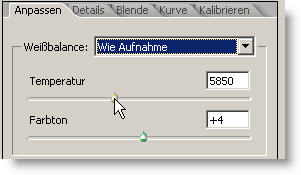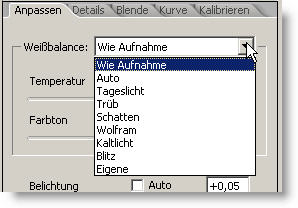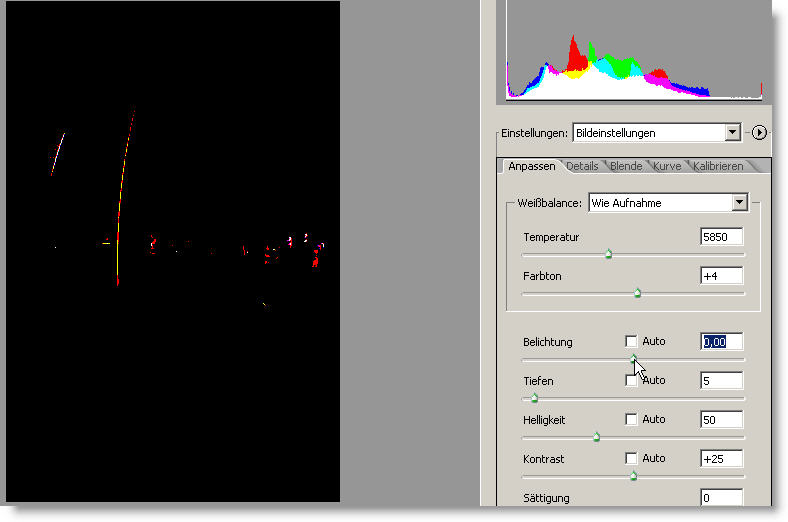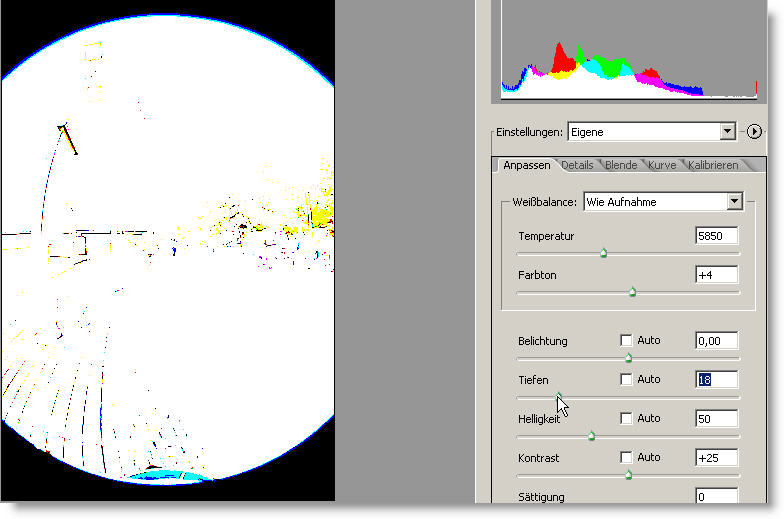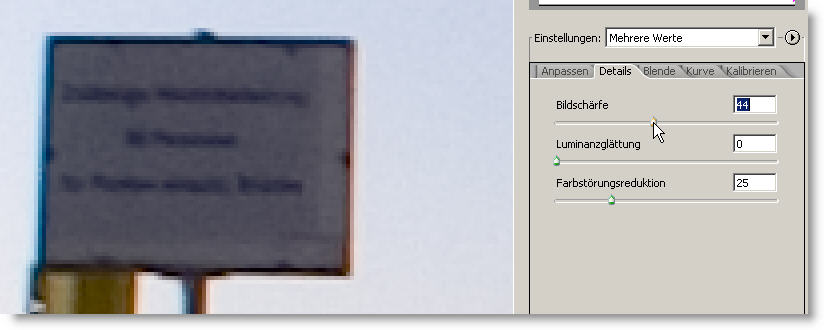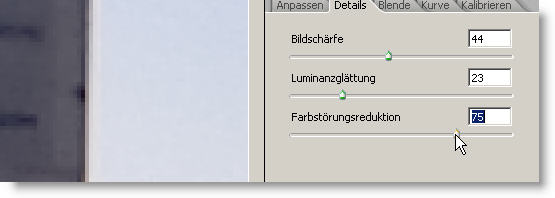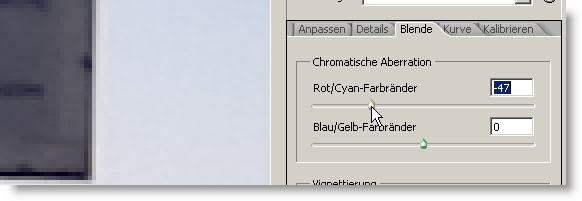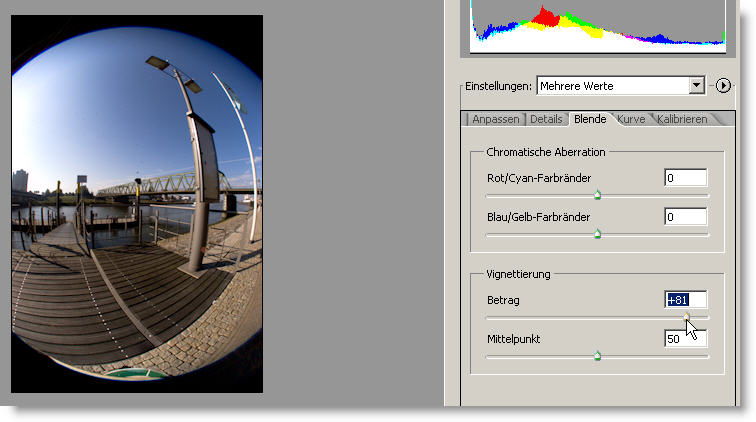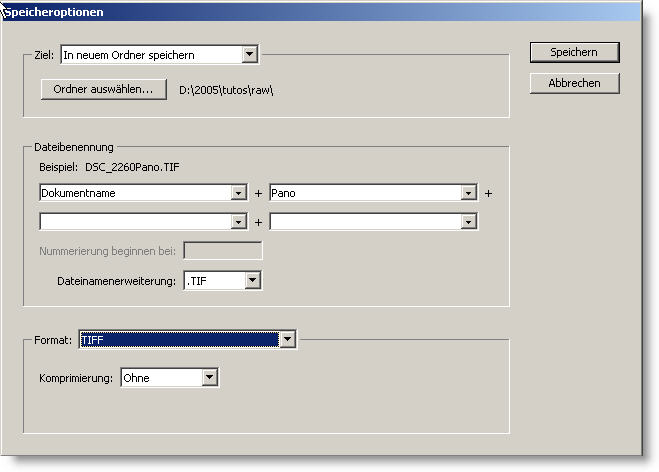Working with RAW files in CS2
Working with RAW panorama source files (German CS2 images with English added in () after German names)
Working within CS2, click File->Open and then navigate to the panorama's source images. Select the relevant source files and click Open.
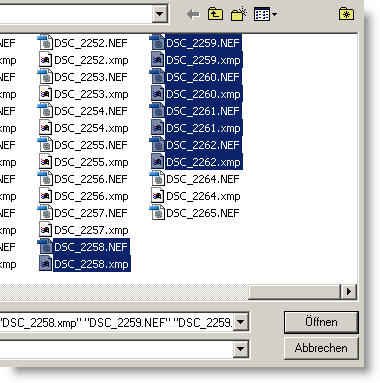
A window will open with thumbnailed pictures on the left and the select picture in the middle. On right hand side are tabs with the images' parameters and adjustment sliders.
First check the color temperature (Temperature). You should select all pictures on the left side for this action (mouse-click on the first, than strg/A (Shift-A) on the last image), because the color temperature has to be the same for all pictures of your panorama.
Use the (Temperature) slider to select the color-temperature If you prefer, you select one of the pre-sets
After that, check the exposure. CS2 automatically set the exposure tabs on Auto. Search for your key pic in the left row and tab it with the mouse. Uncheck the "Auto" and look at the result.
Adjust exposure by moving the (Exposure) slider on the right site: If you use the Alt key you will see the brightest parts on black background, moving the first slider "Belichtung"(Exposure); Same for "Tiefen"(Shadows), you will find the darkest parts on white background
Now you may correct other parameters in the Detail tab:
Sharpening and color noise reduction
Sharpening: zoom in 400% and play with the sharpening (Sharpness) slider
Go to the second slider "Luminanzgl�ttung"(Luminance Smoothing) : This will reduce noise without changing brightness
"Farbst�rungsreduktion" (Color Noise Reduction) will reduce the noise just at the border
Chromatic aberration in the Lens tab: Detailed information about ca on Erik Krauses HP
Vignetting
A very powerful tool is the vignetting tool: Select all pictures on the left side and move the vignetting "Amount" slider until the picture looks right.
Options and saving the pictures
Lastly, set the options for colour-space (Space), picture size (Size) colour-depth (Depth) and resolution (Resolution).
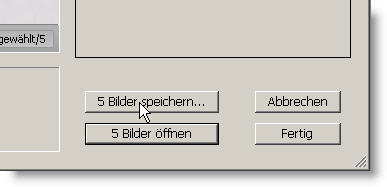 Once you are satisfied with the modifications that you have made, save all of the images in a batch process. Click on "5 Bilder speichern..." (Save 5 images...)
Once you are satisfied with the modifications that you have made, save all of the images in a batch process. Click on "5 Bilder speichern..." (Save 5 images...)
Select the destination folder or create a new one. Modify the file naming scheme for the images and select the required file format.
Florian Bertzbach
